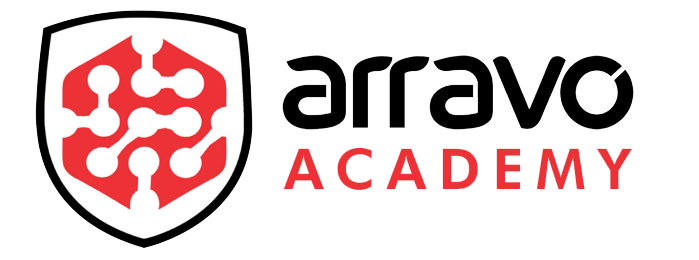Live Training Sessions To Learn Fullstack Python Development From the Arravo Academy
Python Full Stack is currently one of the most popular and widely utilized high level and interactive programming language with because it is extremely readable and uses English phrases instead of complex programming languages with advanced syntactical construction.
A full-stack Python developer has expertise in using the Python suite of languages for all software and applications. As per surveys on job research, Python has topped the list of most used programming languages. Several companies are now depending on python for their major projects. It is forecasted that there are over 40,000 jobs that are entirely for python experienced developers in major countries.
Why Opt For The Online Fullstack Python Development Course?
Python is quite a friendly programming language with less coding as compared to Java and other programming languages.
· It is highly interactive and interpreted programming language with an object-oriented concept.
· Python is also portable and can easily support any platform.
· The average salary of a Python developer is higher than developers using other languages
· Python Full Stack would help the user to perform other functions in addition to software development. These include data analysis, network implementation, and security
· The job opportunities and growth opportunities in Python programming is increasing rapidly due to its flexibility and improved productivity.
Course Outline
a. FRONTEND DEVELOPMENT
Module 0 : INTRODUCTION
- What is Full-Stack Development
- Software Development Principles
- Web Development Tools
- Introduction to Text Editors
- Installing Visual Studio Code
- What is Http?
- How the web works
- Planning your web project
- Sketching your project design
- Choosing Assets
- Creating Project Directory
Module 1: HTML/CSS
- What is HTML?
- Anatomy of an HTML Element
- Basic structure of an HTML Document
- Creating a basic HTML Document Structure : Part 1
- Creating a basic HTML Document Structure : Part 2
- Creating a basic HTML Document Structure : Part 3
- HTML Attributes
- Marking Up Text
- Creating Links
- HTML Code Comments
- Viewing HTML Source Code
- What is CSS?
- Ways to apply CSS
- Styling Multiple Properties
- Styling multiple elements
- Modifying CSS
- CSS Basic Selectors
- Css Comments
- CSS Box Model
- CSS Margin and Padding Property
- Changing Background Color
- CSS Border Property
- CSS Positioning
- CSS Display Property
- CSS Font Property
- Using Google Fonts
Module 2: BOOTSTRAP
- What is Bootstrap
- Bootstrap Installation Options
- Bootstrap Dependencies
- Bootstrap Minimum Template
- Basic HTML Document Anatomy
- Creating A basic Website with Bootstrap
- Creating Buttons Using Bootstrap
- Creating a Progress Bar using Bootstrap
Module 3: JAVASCRIPT & REACT
- What is JavaScript
- Where to place JavaScript
- JavaScript Variables
- Variable Naming Convention
- JavaScript Arrays
- Data Types
- Mixing Data Types
- JavaScript Operators
- Arithmetic Operators
- Operator Precedence
- String Operators
- Comparison Operators
- Logical Operators
- TypeOf Operators
- Conditional Statements
- Functions
- JavaScript Code Comments
- Linting Tools
- JavaScript Events
- Switching Images
- Fixing JS Lint Warnings : Part 1
- Fixing JS Lint Warnings : Part 2
- Adding Welcome Message to Web Page
- Introduction & Setup – React
- React Basics
- Using Creat-React-App
- Intro to state & Use State
- Components & Props
- Styling React applications
- User Inputs & Events
- Fetching Data & UseEffect
- Project Build 1
- Project Build 2
- React Context & Reducers
b. BACK END Development
Module 4: SQL and Databases With PostgreSQL
- What is SQL
- What is PostgreSQL
- Database Concept
- Installing PostgreSQL on Windows
- Installing PostgreSQL on Mac
- Connecting to PostgreSQL
- Installing Sample Database
- What is CRUD
- Data Types
- SQL Commands: CREATE Table
- SQL Commands: INSERT Data
- SQL Commands: UPDATE Data
- SQL Commands: READ Data with SELECT
- SQL Commands: WHERE Clause
- SQL Commands: ORDER BY Clause
Module 5: PYTHON
- Python Introduction & Setup
- Interacting with Python
- Python Operators
- Python Data Types
- Python Data Structures
- Python Functions
- Python Control Flow Statements
- Python Object Oriented Programming – OOP
- Python Modules and Packages
- Handling Exception Errors
Module 6: DJANGO
-
Django – Introduction
-
Creating project directory
-
Project mockup design
-
Creating a Django Project
-
Anatomy of a Django Project
-
Starting Django Development Server
-
Django Migrations
-
Installing Django App
-
Anatomy of a Django App
-
Django admin and superuser
-
Django Templates
-
Django Views
-
Django URL Patterns
-
Django Static Files
-
What are Django Models
-
Creating Models
-
Migrating Models
-
Adding Models to Admin Site
- Django Project
Module 7: Introduction to DevOps Practices and Principles
- DevOps overview and best practices
- Restful API
- Source Control Management and Git repositories
- Command Line Interface
- Deploy to Cloud (Heroku/AWS)
- Continuos Integration/Delivery/Deployment
Frequently Asked question
Call 08061451247 for details.
Arravo Academy will provide you 100% job assistance with an internship letter for the Python Fullstack Development training which you can use as your work experience while searching for a job. We also provide interview preparation & personality development classes separately for enhancing your skills.
All our trainers have over 5 years experience in Python FullStack Development . All trainings teams are coordinated by our lead instructor. You can connect him on linkedin https://www.linkedin.com/in/kunlejoseph/
Don’t worry, we have many upcoming batches for the Fullstack Python Development course. You can join the upcoming batch at your convenience.
Course Reviews
N.A
- 5 stars0
- 4 stars0
- 3 stars0
- 2 stars0
- 1 stars0
No Reviews found for this course.

